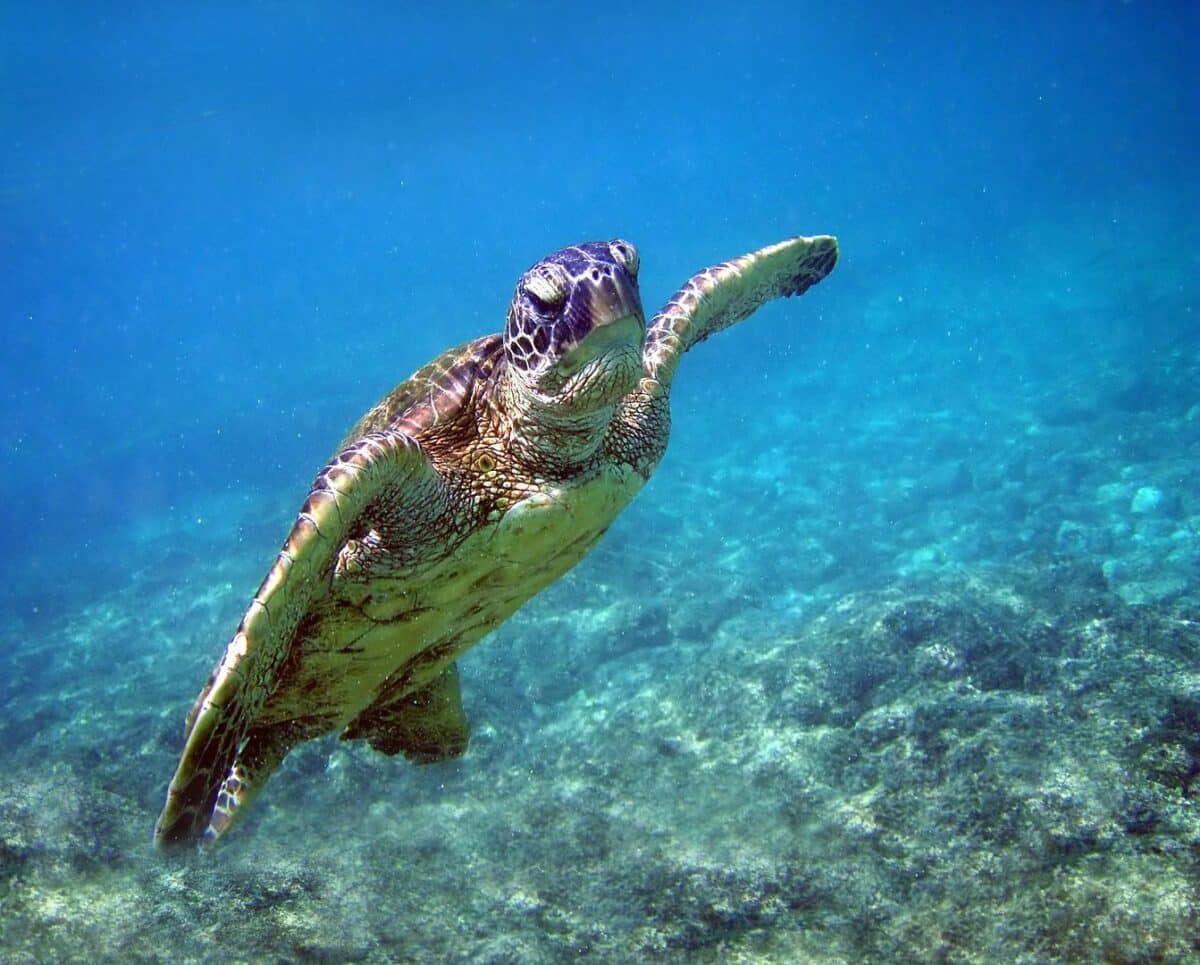On a remote beach, two men come across a distressed sea turtle flipped onto its back. They gently right the turtle without hesitation, ensuring its safe return to the ocean. Witnessing this act of compassion is a child absorbing a powerful lesson in wildlife conservation. In this article, we delve into the potential consequences had the turtle not been rescued and explore the circumstances that lead to such precarious situations for sea turtles.
Why Being Flipped onto Its Back Can Be Fatal for a Sea Turtle
When a sea turtle is flipped onto its back, it faces a critical and potentially life-threatening situation due to several reasons:
- Vulnerability to Predators: Being on its back leaves the turtle defenseless and exposed to predators. It cannot escape or protect itself without the ability to move effectively.
- Inability to Regulate Body Temperature: Sea turtles are ectothermic, relying on the environment to regulate their body temperature. Being stuck on their back, especially under direct sunlight, can lead to overheating or, in colder environments, hypothermia.
- Respiratory Distress: Turtles breathe through their lungs, and being on their back can put pressure on their lungs, making it difficult for them to breathe properly. This position can lead to respiratory distress or suffocation, especially if the turtle cannot right itself quickly.
- Dehydration and Starvation: The turtle can suffer from dehydration and starvation if stranded for an extended period. This is particularly concerning for turtles that get stranded on land far from the water.
- Physical Stress and Injury: The unnatural position can cause physical stress and potential injury to the turtle. The pressure on its internal organs can lead to internal damage.
- Inability to Return to Water: Being in the water is crucial for sea turtles’ survival. Being stuck on their back on land prevents them from returning to their aquatic habitat, which they need for feeding, mating, and overall well-being.

How are Sea Turtles Flipped on their Backs
Sea turtles can end up on their backs for various reasons:
- Other Turtles: During the breeding season, male turtles often fight over females, often resulting in one turtle flipping another onto its back. This can also happen during mating attempts, where either the male or female turtle could end up flipped over.
- Illness: Respiratory illnesses causing fluid in the lungs can make turtles unbalanced while submerged. If such a turtle is washed ashore, it might end up on its back and be unable to right itself.
- Waves: Large waves, especially near the shore, have the potential to flip objects over, including sea turtles. This is particularly likely with breaking waves near the shore.
- Predators: Predators like tiger sharks and killer whales (orcas) are known to attack adult sea turtles. In some cases, these attacks could result in a turtle being flipped onto its back.
In summary, a sea turtle flipped onto its back is in a dangerous and potentially fatal situation. It requires quick assistance to be turned over and returned to its natural habitat to ensure survival. Instilling a sense of nature conservation in the younger generation is crucial for the enduring protection of these magnificent creatures.
You might also enjoy:
Turtle Uses Shell as Shield During Intense Shark Attack
Watch: Crocodile Eating a Turtle While Getting Stalked By a Shark
Meet the World’s Heaviest Reptile in 2023: The Leatherback Sea Turtle
Join our Forum for free today!

- The Bond Between a Wild Baby Bison and Her Rescuer - July 20, 2024
- An Excited Husky’s First Ever Time in Snow - July 20, 2024
- Top 20 Colorful Species To Brighten Your Day - July 14, 2024

